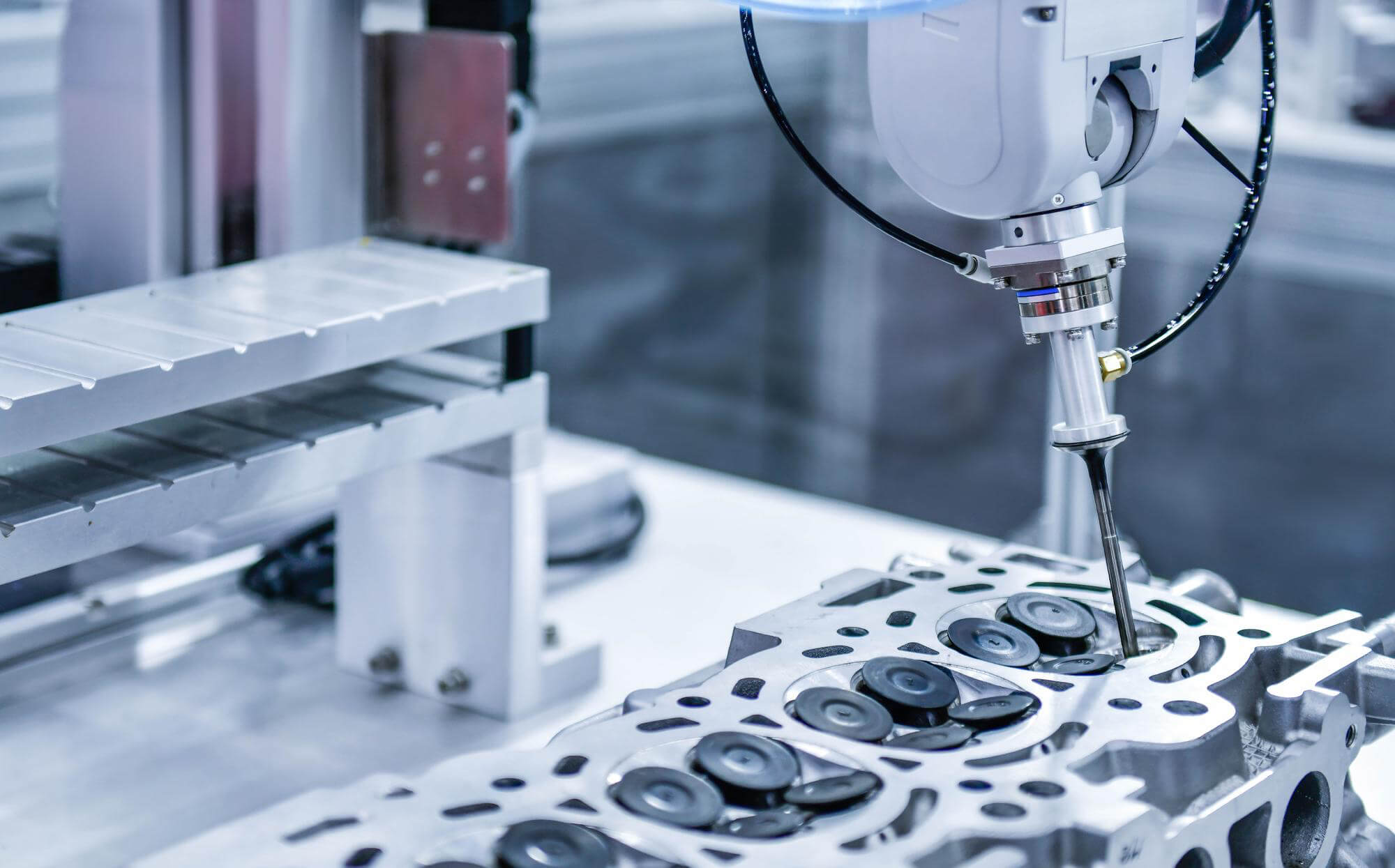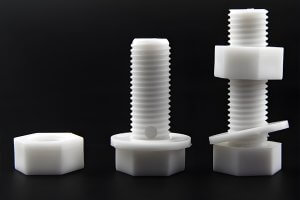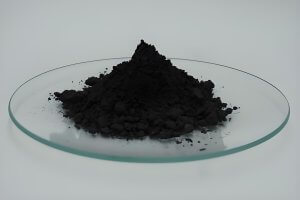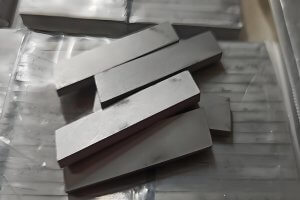When it comes to producing parts for micro molding machines, the finishing techniques used in the CNC machining process play a crucial role in ensuring that these components meet the high precision and quality standards required. For technical professionals and procurement specialists looking to understand or assess a supplier’s capabilities, it’s essential to have a solid grasp of these finishing processes. This guide will walk you through various finishing techniques and how they apply to the CNC production of micro molding machine parts.
1. Introduction to CNC Machining for Micro Molding Machine Parts
CNC machining is a highly precise and versatile manufacturing process used to create intricate parts for various industries, including micro molding machines. These machines require components that can handle the demands of producing very small, detailed parts with tight tolerances. The success of micro molding operations heavily depends on the quality of the machine parts, which in turn relies on the effectiveness of the finishing techniques applied during CNC machining.
Key Points:
- CNC machining ensures high precision in part production.
- Finishing techniques are vital for achieving the desired surface quality and dimensional accuracy.
- Micro molding machine parts often involve complex geometries and require rigorous quality standards.
2. Overview of Finishing Techniques in CNC Machining
Finishing techniques in CNC machining are processes that refine the surface of a part after the primary machining operations are completed. These techniques are essential for enhancing the appearance, improving the dimensional accuracy, and ensuring the functionality of the parts. Below, we delve into some of the most commonly used finishing techniques in CNC machining for micro molding machine parts.
a. Abrasive Finishing
- Abrasive Paper and Cloth: Typically made from materials like aluminum oxide, silicon carbide, or zirconia alumina, abrasive paper and cloth are used to smoothen surfaces and remove minor imperfections. These materials are often applied in the form of sheets, belts, or discs, depending on the part’s requirements.
- Sandblasting: A method where fine grains of abrasive material are blasted onto the part’s surface to remove contaminants and provide a uniform finish. This is particularly useful for parts that need a matte or textured surface.
b. Honing
- Honing Stones: This technique is primarily used to improve the surface finish of holes or cylindrical surfaces. Honing stones, made of bonded abrasive material, are used to remove small amounts of material and improve the roundness and surface texture of the parts.
c. Superfinishing
- Controlled Pressure and Short Stroke: Superfinishing involves light pressure and short strokes to produce an extremely fine surface finish. This technique is critical for components where the smoothness of the surface impacts the performance, such as in moving parts within micro molding machines.
d. Lapping
- Soft and Porous Lap Materials: Lapping uses a soft lap material, often made of cast iron, copper, or fabric, combined with fine abrasive grains to achieve a flat, smooth surface. This process is used to achieve tight tolerances and improve the flatness of parts.
e. Polishing
- Mechanical and Chemical Polishing: Polishing enhances the surface by removing very fine layers of material to achieve a glossy, reflective finish. This can be done mechanically with polishing pads and compounds or chemically using substances that promote controlled material removal.
f. Chemical-Mechanical Polishing (CMP)
- Combination of Chemical and Abrasive Actions: CMP is widely used in the semiconductor industry but also applicable for micro molding machine parts. This process combines chemical agents with abrasive action to achieve ultra-flat and smooth surfaces, essential for parts like molds that require extreme precision.
3. Application of Finishing Techniques in CNC Machining for Micro Molding Machine Parts
Each of the finishing techniques discussed plays a specific role in preparing CNC-machined parts for micro molding machines. Understanding how these techniques apply can help you assess the quality of parts and the capability of suppliers.
a. Surface Preparation
- Before parts can be used in micro molding machines, they must undergo rigorous surface preparation. Abrasive finishing techniques are commonly used to remove burrs, smoothen edges, and prepare surfaces for further processing.
b. Dimensional Accuracy
- Techniques like honing and superfinishing are essential for achieving the dimensional accuracy required in micro molding machine parts. These processes ensure that cylindrical and bore surfaces meet the tight tolerances necessary for the precision functioning of micro molds.
c. Surface Texture and Finish
- Lapping and polishing are crucial for achieving the desired surface texture. For micro molding machine parts, the surface finish must be controlled to ensure the proper flow and release of molded parts. A smooth, polished surface can reduce wear and improve the lifespan of the molds.
d. Performance Enhancement
- The performance of micro molding machine parts can be significantly enhanced through finishing techniques. Superfinishing, for instance, reduces friction and wear on moving parts, while CMP ensures ultra-smooth surfaces that are critical for high-precision molds.
Table 1: Finishing Techniques and Their Applications in CNC Machining for Micro Molding Machine Parts
| Finishing Technique | Application in CNC Machining | Key Benefits for Micro Molding Parts |
|---|---|---|
| Abrasive Finishing | Surface smoothing, burr removal | Improves part aesthetics and prep |
| Honing | Bore and cylindrical surfaces | Enhances dimensional accuracy |
| Superfinishing | Moving parts, critical surfaces | Reduces friction, improves lifespan |
| Lapping | Flatness and surface texture | Achieves tight tolerances |
| Polishing | Surface finish improvement | Enhances gloss and surface quality |
| Chemical-Mechanical Polishing | Ultra-precise surface finishing | Achieves ultra-flat, smooth surfaces |
4. Assessing Supplier Capabilities in CNC Machining for Micro Molding Machines
When selecting a supplier for CNC-machined parts for micro molding machines, it’s crucial to assess their capabilities in applying these finishing techniques. A supplier’s ability to execute these processes effectively will directly impact the quality and performance of the parts they produce.
a. Experience and Expertise
- Look for suppliers with a proven track record in finishing operations specific to micro molding machine parts. Their experience with precision finishing processes will be crucial in delivering parts that meet your stringent requirements.
b. Equipment and Technology
- Ensure that the supplier has access to advanced CNC machines equipped with the necessary finishing tools and capabilities. Modern equipment, such as multi-axis CNC machines and high-speed spindles, is essential for achieving the precision required in micro molding machine parts.
c. Quality Control and Inspection
- A supplier’s quality control process should include rigorous inspection and testing of finished parts. This should involve both in-process inspection during the CNC machining and post-process verification after finishing. Suppliers should use advanced measurement tools, such as coordinate measuring machines (CMMs), surface roughness testers, and optical profilers, to ensure that all parts meet the required specifications.
d. Capability to Handle Complex Geometries
- Micro molding machine parts often involve intricate geometries and small features that require specialized finishing techniques. Assess whether the supplier has the capability to handle these complexities effectively. This includes their experience in working with multi-axis CNC machines and their ability to perform precision finishing operations on small, detailed components.
e. Material Expertise
- Different materials react differently to finishing processes. For instance, stainless steel, titanium, and high-performance alloys commonly used in micro molding machines may require specific finishing techniques to achieve the desired surface quality and dimensional accuracy. Ensure the supplier has experience with the materials relevant to your parts.
f. Production Scalability
- If your project requires scaling up production, it’s important to choose a supplier who can maintain consistency in finishing quality even at higher volumes. Their processes should be robust enough to ensure that all parts, regardless of production batch size, meet the same high standards.
Table 2: Criteria for Assessing Supplier Capabilities in CNC Machining of Micro Molding Machine Parts
| Criteria | Importance in CNC Machining for Micro Molding Parts | What to Look For in a Supplier |
|---|---|---|
| Experience with Finishing Techniques | Critical for achieving required surface quality | Proven track record, relevant case studies |
| Advanced Equipment | Necessary for precision and consistency | Multi-axis CNC machines, high-speed spindles |
| Quality Control Processes | Ensures parts meet specifications | In-process inspection, post-process verification |
| Capability with Complex Geometries | Essential for micro molding parts | Experience with intricate designs and small features |
| Material Expertise | Different materials require different approaches | Experience with relevant materials (e.g., stainless steel, titanium) |
| Production Scalability | Maintains quality at higher volumes | Ability to scale production while ensuring consistency |
5. The Role of Finishing Techniques in Enhancing Micro Molding Machine Part Performance
The performance of micro molding machine parts is not solely dependent on the initial machining process but also on how well the finishing techniques are applied. Properly finished parts can lead to better mold performance, longer tool life, and overall improved efficiency in the molding process.
a. Improving Mold Durability
- Finishing techniques like superfinishing and honing can significantly improve the durability of molds used in micro molding machines. By reducing surface roughness and improving dimensional accuracy, these techniques help prevent premature wear and tear, extending the life of the molds.
b. Enhancing Part Release
- A polished or lapped surface on the mold components can facilitate easier release of molded parts, reducing the chances of defects or damage during ejection. This is particularly important for complex micro molds where part removal can be challenging.
c. Reducing Friction and Wear
- In micro molding machines, parts that move against each other, such as ejector pins and mold slides, benefit greatly from finishing techniques that reduce friction. Superfinishing and polishing reduce surface asperities, leading to smoother operation and less wear over time.
d. Ensuring Precision in Micro Features
- For micro molding machine parts that involve very fine features, such as micro cavities or intricate patterns, finishing processes like lapping and chemical-mechanical polishing ensure that these features are produced with the necessary precision. This precision is critical for the functionality and quality of the final molded products.
6. Challenges in Finishing CNC Machined Parts for Micro Molding Machines
While finishing techniques offer significant benefits, they also come with challenges, especially when applied to parts for micro molding machines. Understanding these challenges can help in better planning and execution.
a. Maintaining Dimensional Accuracy
- One of the primary challenges in finishing operations is maintaining the dimensional accuracy achieved during the CNC machining process. Over-polishing or excessive material removal can alter critical dimensions, potentially rendering a part unusable.
b. Achieving Consistency Across Batches
- Ensuring consistency in surface finish and dimensional accuracy across multiple production batches can be difficult. Variations in tool wear, material hardness, and operator skill can lead to inconsistencies in finished parts.
c. Handling Complex and Delicate Features
- Micro molding machine parts often have delicate features that can be easily damaged during aggressive finishing operations. Careful selection of finishing techniques and parameters is necessary to avoid compromising these fine details.
d. Time and Cost Considerations
- Finishing operations can be time-consuming and add to the overall production cost. Balancing the need for high-quality finishing with the constraints of time and budget is a challenge that requires careful planning and efficient process management.
7. Future Trends in CNC Machining and Finishing for Micro Molding Machine Parts
As technology continues to evolve, so do the finishing techniques and CNC machining processes used in the production of micro molding machine parts. Staying ahead of these trends can provide a competitive edge.
a. Integration of Automation and AI
- The integration of automation and artificial intelligence (AI) into CNC machining and finishing processes is set to revolutionize the industry. Automated systems can optimize finishing processes in real-time, adjusting parameters to ensure consistent quality and efficiency. AI-driven systems can learn from previous operations, improving over time and reducing the need for human intervention.
b. Advances in Tooling Materials
- The development of new tooling materials for finishing operations, such as diamond-coated tools and advanced ceramics, offers greater durability and precision. These materials can handle tougher alloys and achieve finer finishes, making them ideal for the demanding requirements of micro molding machine parts.
c. Hybrid Machining and Finishing Processes
- Hybrid processes that combine additive and subtractive manufacturing techniques with advanced finishing operations are emerging. These processes allow for the creation of complex parts with integrated finishing, reducing the need for separate post-processing steps and improving overall production efficiency.
d. Sustainable Finishing Solutions
- As environmental concerns become more pressing, there is a growing focus on sustainable finishing solutions. This includes the use of eco-friendly abrasives, reduced water and energy consumption, and recycling of materials used in the finishing process. Suppliers who adopt these practices not only reduce their environmental impact but also appeal to customers who prioritize sustainability.
The finishing techniques applied during the CNC machining of micro molding machine parts are critical to achieving the high precision and quality required for these intricate components. From abrasive finishing and honing to polishing and chemical-mechanical polishing, each technique plays a vital role in preparing parts for their final application.
For technical professionals and procurement specialists, understanding these processes is essential for evaluating a supplier’s capabilities and ensuring that the parts they produce meet the stringent standards required for micro molding operations. By choosing a supplier with the right experience, equipment, and quality control processes, you can ensure that your micro molding machines operate at peak efficiency, delivering high-quality products consistently.
As technology advances, the future of CNC machining and finishing for micro molding machine parts looks promising, with innovations in automation, tooling materials, and sustainable practices leading the way. Staying informed about these trends and incorporating them into your operations will be key to maintaining a competitive edge in this rapidly evolving field.
Other Articles You Might Enjoy
- Mastering Measurement Techniques for CNC Machining Parts
Measurement tools are the unsung heroes in the world of CNC machining. They ensure that every part produced meets the necessary specifications and standards. Understanding these tools and their applications…
- CNC Machined Parts Mastering Advanced Ceramic Machining Techniques
In the realm of CNC machining, ceramics represent a significant challenge and opportunity. Their extraordinary properties, such as high hardness, wear resistance, and thermal stability, make them ideal for high-performance…
- Unraveling the World of CNC Machined Plastic Parts(CNC machined plastic parts Mabel)
Modern innovations have taken traditional manufacturing methods to new heights. One such innovation that stands out is Computer Numerical Control (CNC) machining, a process used extensively in various industries from…
- Techniques and Optimization of Reaming Operations in CNC Machining Parts
Introduction Reaming might not be the most glamorous topic in the world of CNC machining, but it’s an essential process that can make or break the quality of your parts.…
- CNC Machined Plastic Parts: An In-depth Overview(CNC machined plastic parts Norman)
Computer Numeric Control (CNC) machining is an advanced manufacturing process where pre-programmed software dictates the movement of factory machinery and tools. These applications can carry out complicated manufacturing tasks with…
- Enhancing CNC Machining with Smart Alloys: Shape Memory Metals vs. Traditional Alloys
Introduction to CNC Machining Computer Numerical Control (CNC) machining stands as a cornerstone in modern manufacturing, enabling the precise and automated shaping of materials. This technology relies heavily on the…






